Patterns
Kits
sundries
knitting tools, buttons and notions, project bags and other pleasing little things
knitting tools, buttons and notions, project bags and other pleasing little things
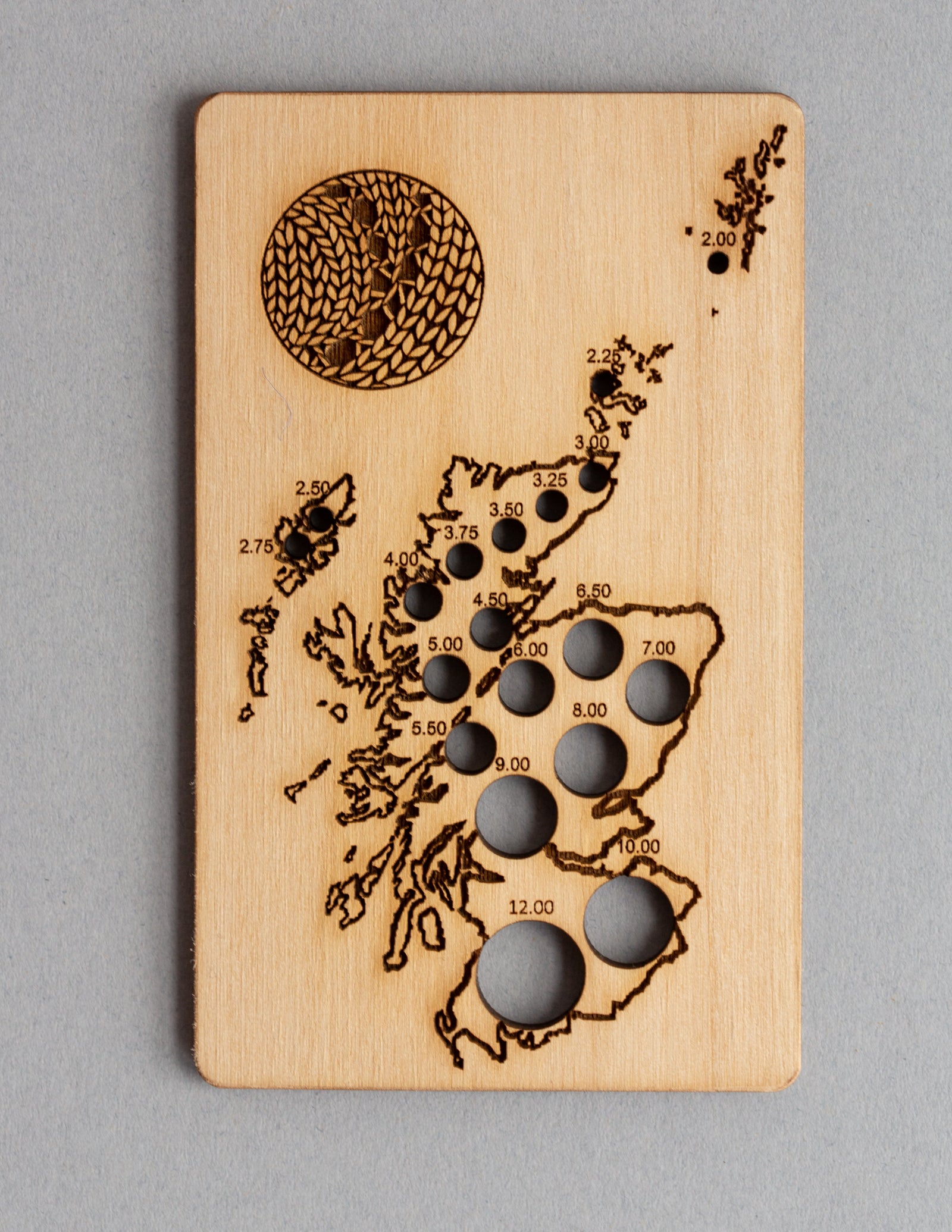
Exclusive Scotland needle gauge by Katrinkles
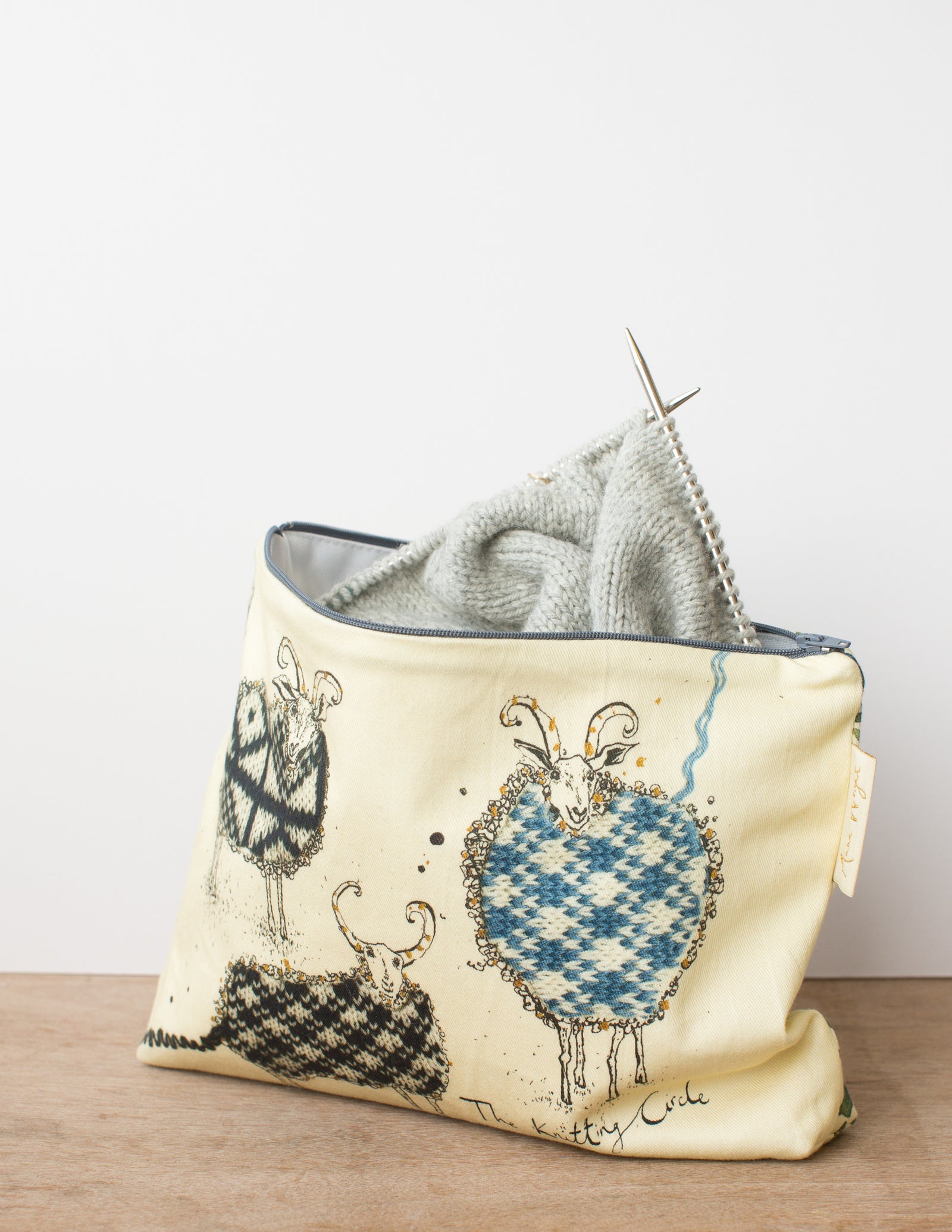
Zippered pouches in two sizes by our studio neighbour Anna Wright
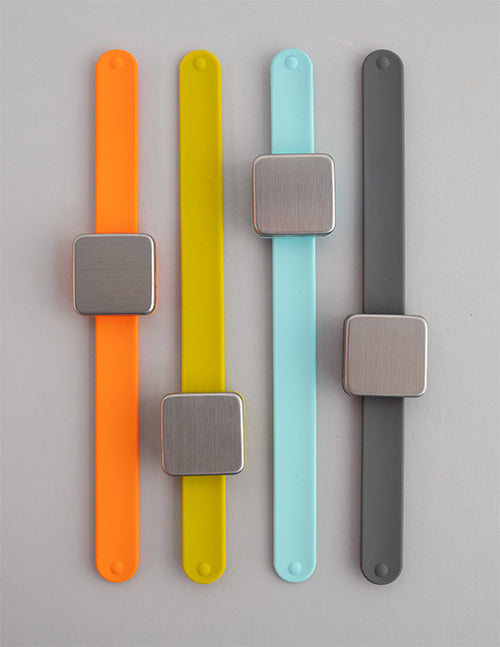
keep small tools accessible with the Maker's Keep
gift 2019
Subscribe to our Colourwork Club for a gift that lasts well into the new year. Your recipient will receive a new colourwork kit in Janurary, February and March
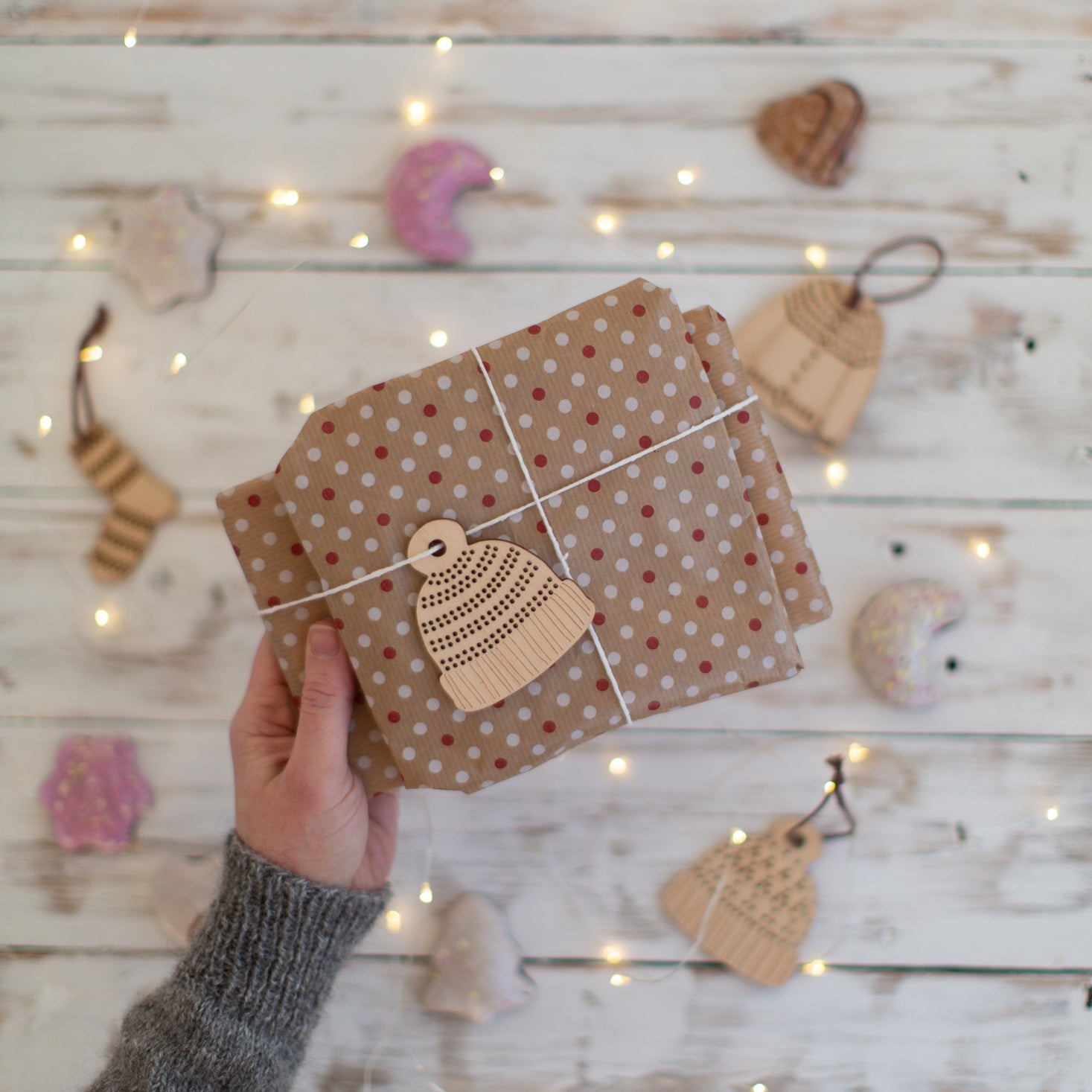
Subscribe to our Colourwork Club for a gift that lasts well into the new year. Your recipient will receive a new colourwork kit in Janurary, February and March

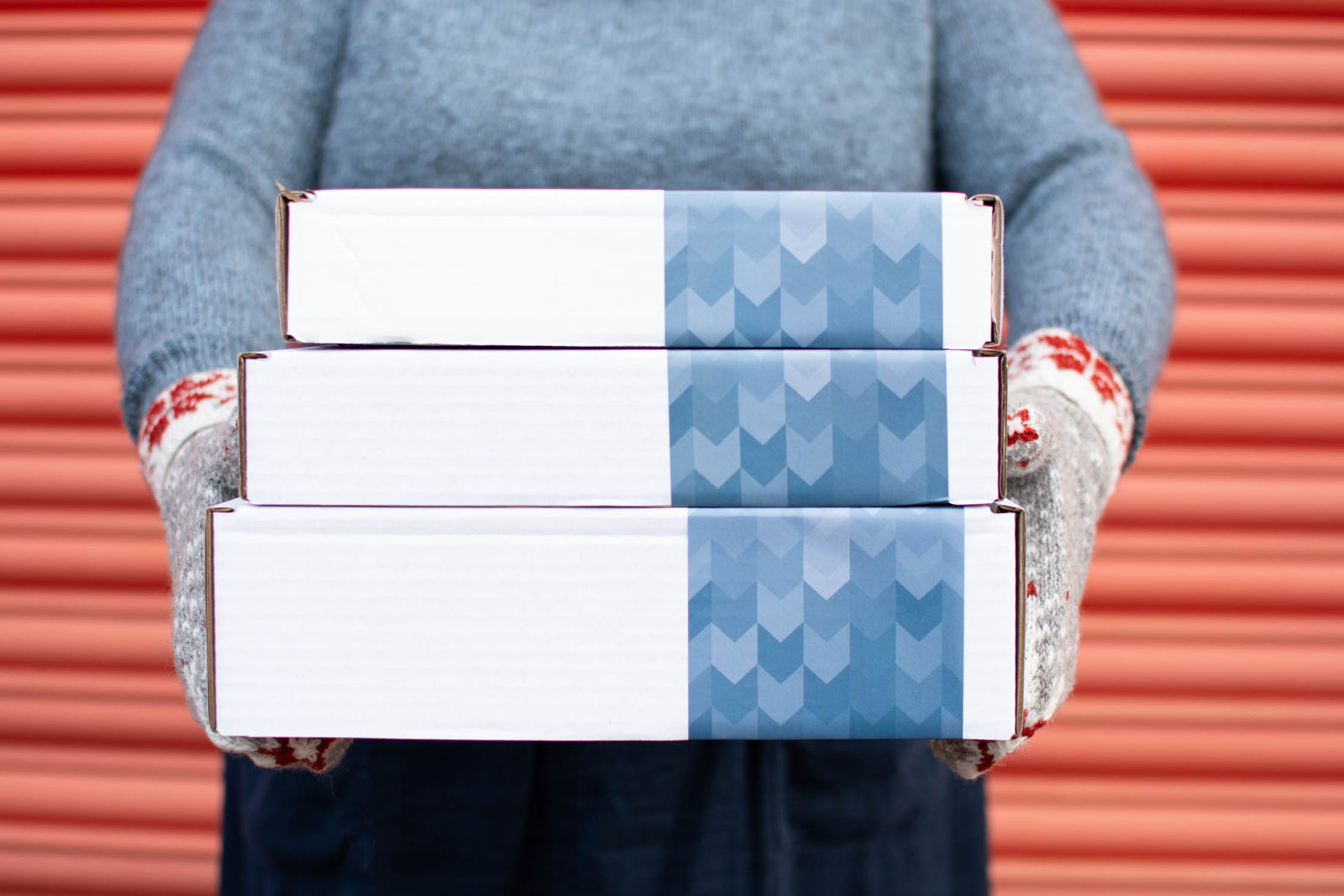
Last minute shopping? Gift cards are delivered electronically - forward the email or print it for your recipient. A range of amounts are available and gift cards don't expire.


Stranded Colourwork: Tips for Small Circumferences
March 13, 2020
In our last post we looked at how to work the decreases on the crown of the Bellfield Hat. As you decrease on a hat crown there will be fewer and fewer stitches on your needles, and at some point, you’ll need to change to needles for working small circumferences - double pointed needles, magic loop, or 2 circulars. All of these methods have similar challenges for colourwork, the biggest of which is maintaining tension.
Switching to double pointed needles or magic loop
Once you’ve worked a few decrease rounds, the stitches will become tight around the needle - time to switch to your double pointed needles or long circular.

You can knit the next row onto the new needles, or slip the stitches without working them. When dividing up the stitches amongst the needles, consider how the pattern repeat falls. Try to keep full repeats together on one needle - it’s okay if the needles have vastly different stitch counts.

Hot tip: It’s easiest to keep the beginning of the round toward the center of one needle, rather than between needles.
Floats across needle junctions
It’s particularly easy for floats between double points to be too short - the yarn always wants to take the shortest path, and will cut the corner to do so!

When switching between needles (either double pointed or magic loop), spread out the last few stitches worked on the previous needle before working the first stitch on the next needle.

It’s also very easy to accidentally make a yarn over around the needle when switching needles, shown above. Make sure both strands are behind the right needle before moving onto the next needle.
Catching a float
For longer stretches between colours, you might want to catch or ‘trap’ your floats - this anchors the float in a stitch and prevents the float from getting too tight. When working the smaller circumference of a hat crown you might find that you need to catch the floats over shorter stretches in order to maintain tension than you would lower down on the hat or on another project with a larger circumference.
On Bellfield I caught the floats on rounds 21 and 22, at the centre of the seven consecutive background stitches, catching the contrast colour directly over the stitch in the same colour on the round below.
To catch a float in the pattern (dominant) colour:
Insert the right needle into the next stitch to knit (above). The strand to be caught is on the left.

Bring the left strand OVER the right needle from the back, holding it in place and making sure the first float isn’t too tight;

Then wrap the right strand normally and draw through to complete the knit stitch.

The float should be trapped in the stitch, at the back of the work. Continue in your working yarn, checking that you haven't pulled the float too tightly across the back.
With a little practice, your stranded colourwork will be flying off the needles!
Save this tutorial for later on Pinterest!

If you're not a member of the Colourwork Club all three patterns can be purchased together here.
Also in Journal
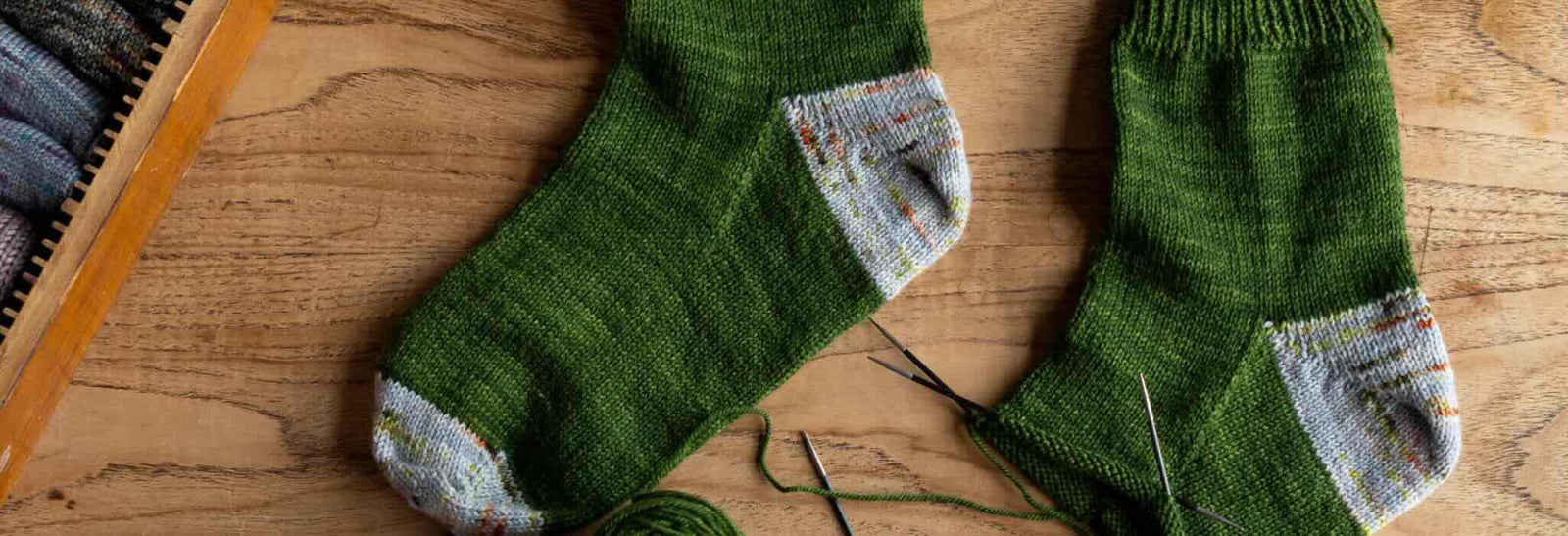
Deep Shadow Heel Tutorial
September 25, 2025

20 Years of Ysolda Knitting Patterns: Part 2
June 23, 2025

20 Years of Ysolda Knitting Patterns: Part 1
June 19, 2025
Recent Articles
-
Deep Shadow Heel Tutorial
September 25, 2025
-
20 Years of Ysolda Knitting Patterns: Part 2
June 23, 2025
-
20 Years of Ysolda Knitting Patterns: Part 1
June 19, 2025
-
Learn to Knit: Mattress Stitch
March 29, 2023
-
How to Knit a Scarf: A Beginners Guide to Scarf Knitting
March 23, 2023
-
Learn to knit: the long tail cast-on
February 03, 2022
-
How to Graft Your Knitting
December 09, 2021
-
Crochet Provisional Cast-on
December 02, 2021
-
Learn to knit: How to knit in the round with double pointed needles
November 25, 2021
-
Learn to knit: How to knit in the round using the magic loop technique
November 25, 2021
Free resources
-
KALS, step-by-step pattern guides and free patterns
Learn brioche with the free Daniel's Hat pattern
Tombreck - a free chevron beanie pattern
Working the brioche neck detail on the Polwarth sweater
Installing a zipper and ribbon, finishing wee Carson
Yarn colour ideas for Threipmuir sweater
Additional colourways for the Joy mitts (choose your pride flag)
How to join the shoulders on Wardie
How to join the pockets on Granton and Wardie
Finishing Resources for Granton
Broughton mittens tutorial part 1
Broughton mittens tutorial part 2
Broughton mittens tutorial part 3
Basics
Casting on
Decorative Channel Island Cast-on
Binding off
3 Easy Stretchy Bind-offs (p2tog bind-off; k2togtbl, k1 bind-off; Jeny's surprisingly stretchy bind-off)
Tubular Bind-off for brioche stitch
Increasing
Paired increase methods compared
How to continue in pattern while increasing and decreasing
Decreasing
Brioche stitch double decreases
Knitting in the round
How to Knit in the round using Magic Loop
How to Knit in the round using DPNs
Short rows
Swatching and gauge
Tips and tricks
Avoiding ears when binding off
Tighter purl stitches for neater cables and ribbing
Cabling without a cable needle
How to knit more symmetrical yarn overs
Bust darts in sweaters with all over stitch patterns
A magic formula for evenly distributing shaping
Superwash v Non-Superwash Wool
Picking up sts from the middle of the fabric
Reading knitting patterns
Understanding "continue in pattern"
Help! Where am I in my knitting project?
Using charts, even if you hate them
Finishing
Garment knitting
Joining the body and sleeves on a seamless bottom up sweater
Sizing
Ysolda’s sizing chart for knitwear designers
Inclusive garment knitting
How to pick a garment without a model for you (specifically addresses finding garment patterns when your gender identity isn't represented and the styles you want to knit might not be sized to fit your body)
How does ease affect inclusive size ranges?
Specific stitch patterns
Lace
Identifying and fixing mistakes in lace knitting
Colourwork
Getting started with stranded colourwork
Understanding colour dominance
Working stranded colourwork over small circumferences
Decreases in stranded colourwork
Holding the yarn for stranded colourwork
Ladderback Jacquard (a neat way to deal with long floats)
Cables
Cabling without a cable needle
Cabling without a cable needle on the wrong side
How to knit cabled decreases
Closed ring cable increases and decreasesBrioche
How to work brioche stitch in the round
Other crafts
Cross stitch
How to begin your first large cross stitch project
How to finish a cross stitch project with an embroidery hoop frame
Mending

Sign up today
Find out the latest news from the studio such as sales, pattern releases, and new workshops or KALs our learning community, The Knitwork. We also share helpful tips and exclusive subscriber discounts...




